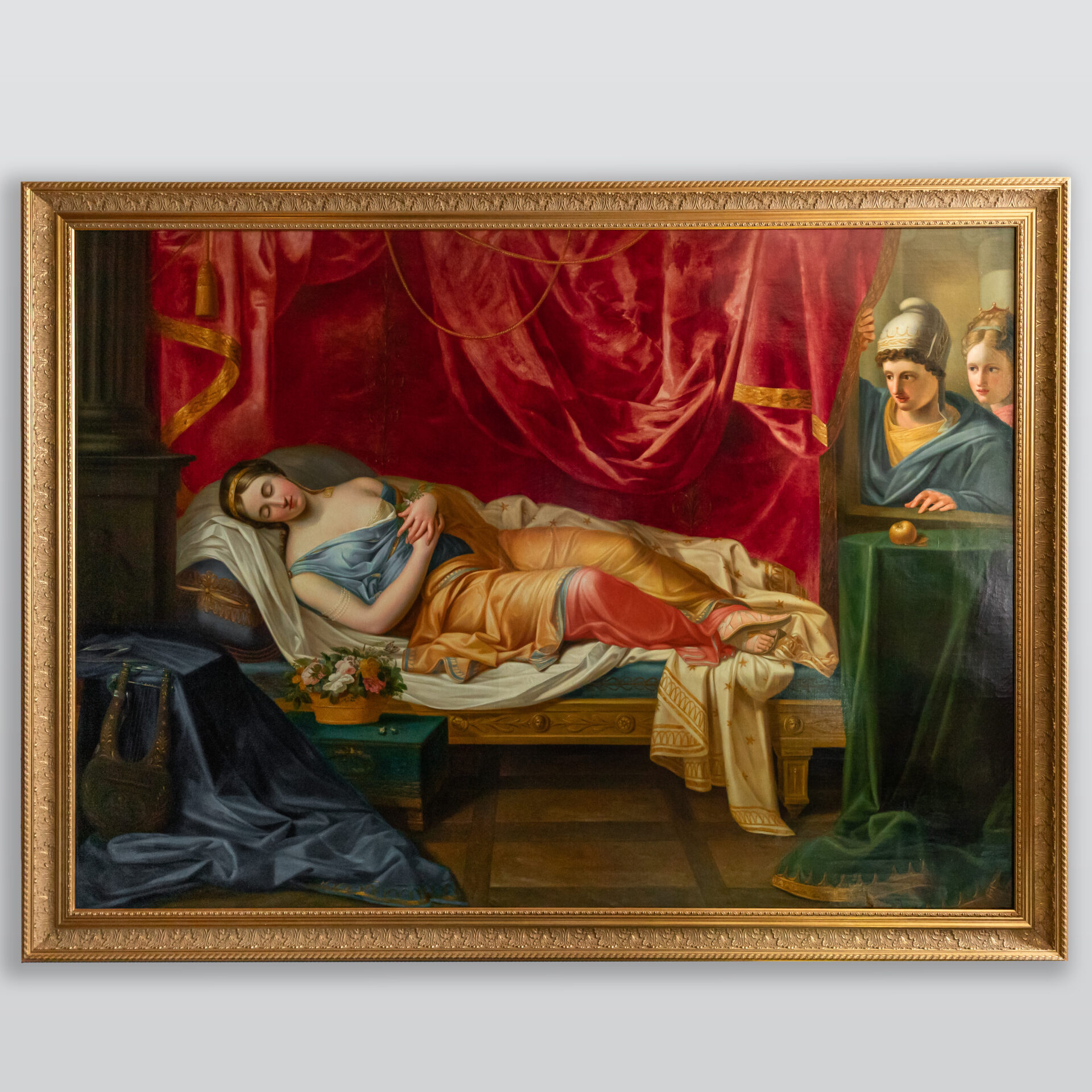François Kinsoen (1770-1839), Bruges.
This painting with Paris and Helena is by Francois Kinsoen. It is an exceptional work within the oeuvre of this painter who has become particularly known for the portraits he painted. The painting is signed F. Kinsoen. It is very similar in technique and execution to the portraits he produced. It is exceptional because this is a piece of history. It may be a portrait historié but that cannot be proven and if so, it is also exceptional within the oeuvre of this artist. Frans Jozef Kinsoen was the eldest son of a blacksmith named Frans Kinsoen in Bruges. He was apprenticed at the Bruges art academy to painter Bernard Fricx (1754-1814) and to the ornamentalist L. F. de Grave. In 1790 he became the first of his class in drawing on the model. To complete his apprenticeship he moved first to Ghent and later to Brussels. In 1794, when the unrest of the French Revolution just subsided, Kinsoen moved to Paris. He settled here and married Augustine Le Prince on 31 October 1801. The marriage remained childless. Seemingly effortlessly, Kinsoen integrated into Paris where he made several portraits of dignitaries after his marriage. The contact with Bruges and Belgium remained, not only in Paris where he regularly met with compatriots, but also through visits to his homeland where he also produced portraits. He painted several portraits of Napoleon and his entourage. In 1808 he was appointed court painter in Kassel to one of Napoleon's brothers, Jerome Bonaparte, the King of Westphalia. This meant a very successful period for Kinsoen in which he produced many portraits. When the Bonaparte regime ended in 1813, Kinsoen found a new patron in the son of Charles Phillipe of France, the Duke of Angoulème. He made several portraits of monarchs, including in his homeland of the king of the Netherlands. After 1830, when revolutions ended the rule of Charles X and that of the oranges in Belgium, Kinsoen continued to paint in Paris for ladies from the aristocracy. Kinsoen died in his hometown while visiting his family. Although he lived and worked most of his life in Paris, he is now remembered as a Bruges painter. Kinsoen's work was strongly influenced by that of Jacques Louis David (1748-1825). He may even have taken lessons from this painter. Davis's studio was freely accessible in those years and as a result David certainly has had 400 apprentices most of whom are not known by name, as this was not recorded. In the oeuvre catalogue that recently appeared, a separate chapter is devoted to the only known historical work of his hand, Belisarius, now in the Museum In Bruges. This painting he presented at the salon of 1817 in Paris. It was received somewhat disparagingly. Since Kinsoen was only known to the reviewers as a portrait painter, this unexpected turn was met with surprise. Kinsoen would never sell the painting and in 1836 donated it to the Academy of Bruges, where he had received his first art lessons. The Academy received it with gratitude. In his donation letter, Kinsoen mentions a commission for a history piece for the city of Beauvais that he ultimately never produced. The author of the book Kinsoen concludes that the Belisarius was Kinsoen's only historical work. The painting Paris and Helena was not known to him. The Paris and Helena may have been in the possession of the Bruges painter and sculptor Pierre Rousseau in the 19th century. On Monday 12 april 1858 the following painting was auctioned in the auction of his estate under number 144: Kinsoen (Signé) Sujet Mythologique.
